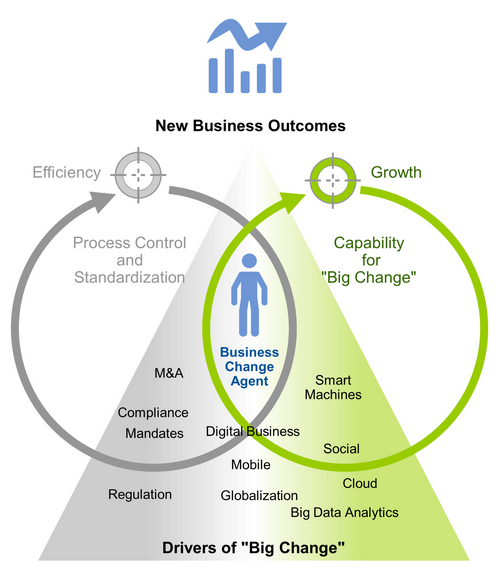Business transformation and process management research shows change agents how to deliver business outcomes from reinvention and transformation initiatives in a highly volatile business environment.
The tried and true way to achieve competitive advantage in business operations has been “to go down an experience curve” to standardize and control repetitive work. Resulting efficiency and productivity gains have been a proven path to success for generations of change agents.
These days, there often is no experience curve to go down. Forces such as cloud, social, mobile, big data, digital business, smart machines and the Internet of Things (IoT) jeopardize long-held assumptions about operational best practices and how to best engage with value chain partners.
A new generation of change agents is needed, one that is capable of delivering “Big Change” — a capability to successfully alter ongoing operations and deliver big outcomes in a complex, high-risk environment fraught with volatility, ambiguity, novelty and diversity. The practical guidance in this Key Initiative shows next-generation change agents and their teams how to successfully apply Big Change to transformation efforts.
ComStream Consulting recommends that organizations establish and evolve the initiative using five major organizing principles. This approach may vary depending on the problems you are trying to solve and the decisions you are trying to make:

